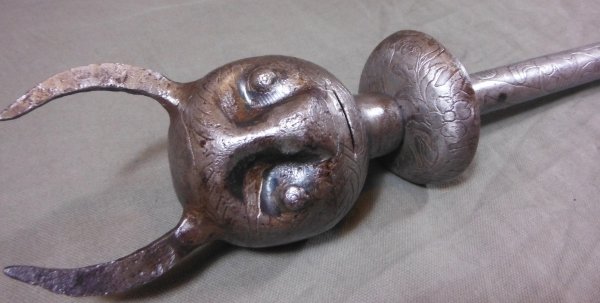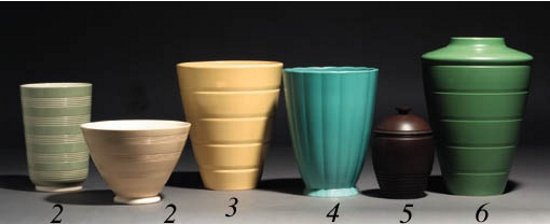The basic facts relating to the Book of Kells can be stated with some brevity. In the early Middle Ages, Gospel manuscripts containing accounts of the life of Christ were produced in large numbers to assist in spreading the Christian message. ‘Pocket’ Gospel books were used for missionary work and private devotion, while larger copies, like the Book of Kells, were displayed to the faithful of established and wealthy churches.
The Book of Kells is an exuberantly decorated manuscript copy of the four Gospels, preceded by prefaces, summaries of the narrative (Breves causae), and canon tables (concordances of Gospel passages). It was written close to the year 800 AD.
The Book contains 340 folios (680 pages). Around 30 further folios, some of them major decorated pages, are missing. Originally a single volume, the Book of Kells was divided into four volumes, one for each Gospel, as a consequence of its repair and rebinding in 1953.
Its Gospel texts are based on the Latin Vulgate (completed by St Jerome in 384 AD) intermixed with readings from the Old Latin translation. The script, which is of a type generally known as ‘insular majuscule’, is embellished by the elaboration of key words and phrases and by an endlessly inventive range of decorative devices. It is clear both from the many textual errors and the ornate nature of some of the decorated pages that the Book of Kells was not intended as a daily reading text but rather for use in particular ceremonies and feast days.
The Book of Kells takes its name from the Monastery of Kells, County Meath, about 70 km north west of Dublin. Kells first became prominent as a refuge for followers of the Irish monk St Colum Cille (otherwise known as Columba, who had died in 597 AD) in flight from a succession of Viking attacks on their monastery on Iona, an island off the west coast of Scotland. After a raid in 806 AD, when 68 of the Iona community were slaughtered, the monks fled to Ireland and began to erect new dwellings at the site in Kells which they had been granted in 804. Completed in 814, Kells became the principal house of the Columban confederation, its abbot being known as the Successor of Colum Cille. The community which produced the Book of Kells was rich and stable, with a large number of scribes and artists and an established library. This description would apply to Iona before the Viking attacks, or Kells in the period of calm it enjoyed after 814. Scholars have not agreed on the date of the Book or its place of production. The date ‘circa 800′ serves as a suitable compromise, with the manuscript attributed to Columban scribes, working either at Iona or at Kells or partially at both locations.
There is a suggestion that the Book of Kells may have been commissioned to celebrate the bicentenary of Colum Cilles’ death in 797 AD, the former abbot of Iona having been celebrated as a scribe in his lifetime, but it is not clear if such anniversaries were marked at the time. The Book is first mentioned in the Annals of Ulster, which recorded that in 1007 the great Gospel book of Colum Cille was stolen from the stone church at Kells but subsequently recovered.
In the Middle Ages, the Book was revered at Kells as a relic of the saint. It was sent to Dublin around 1653 for reasons of security as the church at Kells fell into ruin during the Cromwellian period. The Book of Kells came to Trinity College, the single constituent college of the University of Dublin, through the agency of Henry Jones, a former scoutmaster general to Cromwell’s army in Ireland, and Vice Chancellor of the University, after he became Bishop of Meath in 1661.
As an expression of deep spirituality and outstanding artistic accomplishment, the Book of Kells is for many the supreme product of that flowering of Irish culture which took place between the seventh and the ninth centuries. It has become a symbol of Irish cultural identity and pride. It can be numbered among a handful of works of art known, at least by repute, to all, and is cited, along with Michelangelo’s David and the Mona Lisa, in any list of masterpieces. But, as a book, it differs from such works in one obvious respect, in that it does not constitute a single image, but rather a collection of images. In that fact lies an important element of its appeal. As only a single opening of a book can be seen at the one time, any viewing of the Book of Kells carries with it the constant mystery – and frustration – of what is unseen. If the Book of Kells is in itself a gallery of insular art, it is a gallery with whole wings which remain closed.
The display of the Book of Kells as an art object began in the nineteenth century. For many years the Long Room of the Old Library in Trinity College was the venue, until a custom-built Treasury in the east pavilion of the same building was designed for its display in 1992. It is a very rare event for the manuscript to travel outside Ireland. In 1961, one volume, the Gospel of St Matthew, was exhibited at the Royal Academy, London, in aid of a Library extension appeal. Between 1977 and 1979 the Gospels of John and Mark formed part of the Treasures of Early Irish Art exhibition in the United States of America. The same volumes were part of a revised exhibition, Treasures of Ireland, which toured a number of European venues between 1982 and 1984. The forthcoming exhibition of the Gospel of St Mark at the National Gallery of Australia marks the first departure of the manuscript from Ireland since then.
The Book of Kells will be displayed at the National Gallery of Australia from mid February – mid May 2000. The Exhibition, The Book of Kells and The Art of Illumination will comprise The Book of Kells, accompanied by an exhibition of 50 illuminated manuscripts from Australia and New Zealand curated by Professor Margaret Manion.



